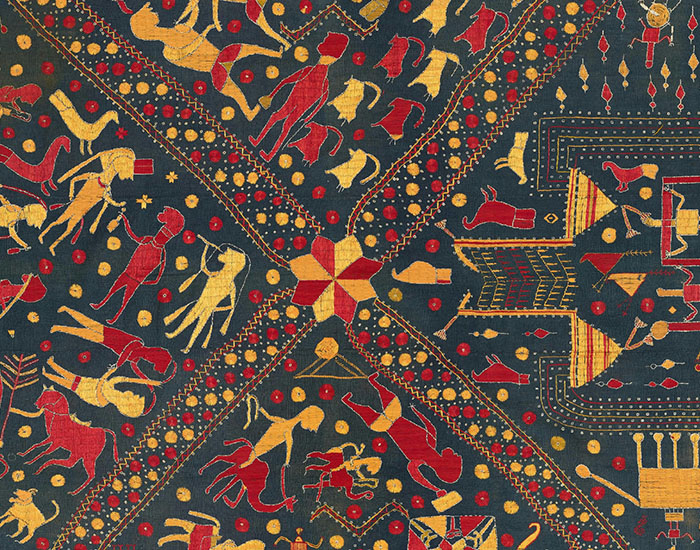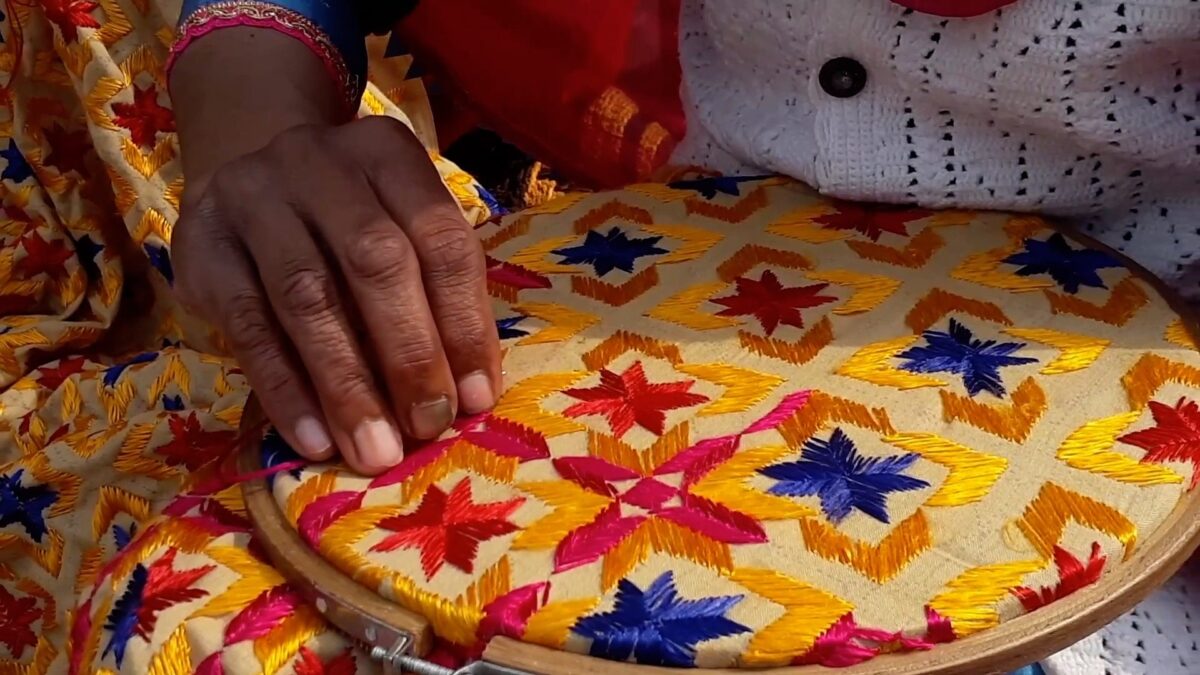“One of my only memories of my home in Lyallpur (modern-day Pakistan)”, my Nani said while showing me her old Phulkari Dupatta.
The earliest reference to Phulkari in Punjabi literature can be dated back to the reign of Maharaja Ranjit Singh in the 18th century, in Waris Shah’s “Heer Ranjha”, which describes Heer’s wedding trousseau, detailing the different clothing items. One of those was Phulkari. Grandmothers and mothers would start making a dupatta for a daughter as soon as she was born, since the birth of a daughter was considered to be auspicious in olden Punjab.
My Nani’s case was the same; her grandmother had started embroidering a dupatta for her right after she was born, and it became one of the few things that she brought with her on the train to Rupnagar. “It was one of the first things that I had packed when I had been made aware of what the future held. It’s value for me is irreplaceable”, she added.
Phulkari was never made to be sold – a folk art in its truest form, it was only made by the women of a household for their own use. It was a skill that every young woman had to learn. Even the Guru Granth Sahib states, “Only then will you be considered an accomplished lady when you will your – self, embroider your own blouse.”

My Nani’s dupatta however, is slightly different from what one might expect from a Phulkari dupatta. Like any artform, Phulkari has regional differences. My Nani’s grandmother was from Ferozepur, where Sainchi Phulkari is practised. It is the only style where figures are outlined with black ink and then filled by embroidering with running stitch. The motifs are different too – scenes of village life replace the typical floral patterns. My Nani’s dupatta depicts women performing chores like churning milk and grinding wheat on the chakki.
In recent years, Phulkari has faced many hardships. It is no longer a craft that is practised in every household, and its ritualistic importance has also diminished considerably. Hand-embroidered Phulkari has been largely replaced by the inexpensive work done by machinery. Those who continue to practise it spend hours straining their eyes in poor light, only to be rewarded poorly with low remunerations, making it economically unviable.
“I never had the chance to learn from my grandmother either.”, my Nani told me when I asked her about the current state of the art form. “The focus at that time was on trying to be as Anglicized as we could be – Phulkari didn’t fit into that. A western education was deemed more necessary than learning embroidery. The reason why my dupatta was important to me was because it was the only thing that I had from my grandmother. I didn’t really understand the importance of the traditional embroidery.”
As Punjab continued to lose its interest in Phulkari over the last decade, the central government and the Government of Punjab introduced PHULKARI – Punjab Government Emporiums that sell printed Phulkari. The loss of the handmade embroidery-work proved to be more difficult to revive. Perhaps the world’s growing interest in slow fashion might spark the rise of a contemporized Phulkari.

